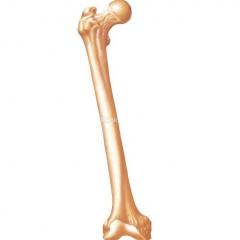Bom dia!
Esse código faz a creature (NPC, monster ou player) andar até a posição desejada.
Notas:
- Não use para longas distâncias. Crie um sistema de waypoints para isso.
- A creature não para exatamente na posição desejada. (caso alguém se interesse em corrigir, eu anexarei ao tópico)
- Utiliza grande poder de processamento. Use de forma sábia.
- Testado apenas em TFS 1.2
Coloque em luascript.cpp
registerMethod("Creature", "moveTo", LuaScriptInterface::luaCreatureMoveTo);
int32_t LuaScriptInterfaceluaCreatureMoveTo(lua_State* L){ //creature:moveTo(pos) Creature* creature = getUserdata<Creature>(L, 1); if (!creature) { lua_pushnil(L); return 1; } const Position& position = getPosition(L, 2); FindPathParams fpp; fpp.minTargetDist = getNumber<int32_t>(L, 3, 0); fpp.maxTargetDist = getNumber<int32_t>(L, 4, 1); fpp.fullPathSearch = getBoolean(L, 5, fpp.fullPathSearch); fpp.clearSight = getBoolean(L, 6, fpp.clearSight); fpp.maxSearchDist = getNumber<int32_t>(L, 7, 150); stdforward_list<Direction> dirList; if (creature->getPathTo(position, dirList, fpp)) { creature->hasFollowPath = true; creature->startAutoWalk(dirList); pushBoolean(L, true); } else { pushBoolean(L, false); } return 1;}
Coloque em luascript.h
static int luaCreatureMoveTo(lua_State* L);
Substitua a função original em creature.cpp
bool CreaturesetFollowCreature(Creature* creature){ if (creature) { if (followCreature == creature) { return true; } const Position& creaturePos = creature->getPosition(); FindPathParams fpp; fpp.minTargetDist = 0; fpp.maxTargetDist = 1; fpp.fullPathSearch = true; fpp.clearSight = true; fpp.maxSearchDist = 150; stdforward_list<Direction> dirList; if (creaturePos.z != getPosition().z || !canSee(creaturePos) || !getPathTo(creaturePos, dirList, fpp)) { followCreature = nullptr; return false; } if (!listWalkDir.empty()) { listWalkDir.clear(); onWalkAborted(); } hasFollowPath = false; forceUpdateFollowPath = false; followCreature = creature; isUpdatingPath = true; } else { isUpdatingPath = false; followCreature = nullptr; } onFollowCreature(creature); return true;}
Substitua a função original em monster.cpp
bool MonstergetNextStep(Direction& dir, uint32_t& flags){ if (getHealth() <= 0) { //we dont have anyone watching might aswell stop walking eventWalk = 0; return false; } bool result = false; if (hasFollowPath) return CreaturegetNextStep(dir, flags); else if ((!followCreature || !hasFollowPath) && !isSummon()) { if ((followCreature || getTimeSinceLastMove() > 1000) && !hasFollowPath && !isIdle) { //choose a random direction result = getRandomStep(getPosition(), dir); } } else if (isSummon() || followCreature) { result = CreaturegetNextStep(dir, flags); if (result) { flags |= FLAG_PATHFINDING; } else { //target dancing if (attackedCreature && attackedCreature == followCreature) { if (isFleeing()) { result = getDanceStep(getPosition(), dir, false, false); } else if (mType->staticAttackChance < static_cast<uint32_t>(uniform_random(1, 100))) { result = getDanceStep(getPosition(), dir); } } } } if (result && (canPushItems() || canPushCreatures())) { const Position& pos = SpellsgetCasterPosition(this, dir); Tile* tile = g_game.map.getTile(pos); if (tile) { if (canPushItems()) { MonsterpushItems(tile); } if (canPushCreatures()) { MonsterpushCreatures(tile); } } } return result;}
Aproveitem! Abraço.











